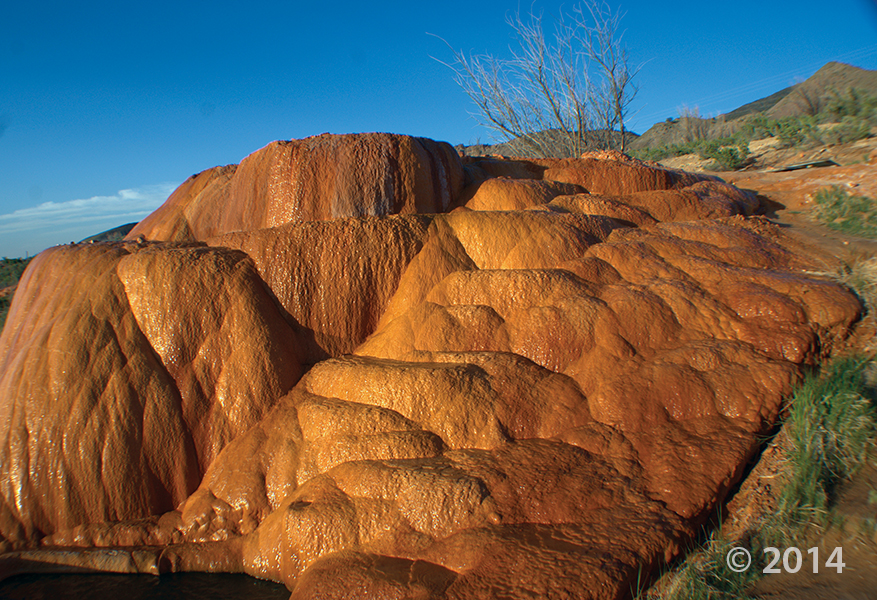Despite the lingering heat, another summer in Utah is coming to a close. The canyons will soon be ablaze with fall colors and the valleys won’t be far behind. In this spirit we have selected another photo from Gerard Dauphinais to give us a little taste of fall. This photo was taken near Fremont Indian State Park, located in west Sevier County. The park is famous for containing many instances of Fremont Indian rock art.
The Sevier Formation contains most of the major rock outcrops seen in the park. A notable feature of the Sevier Formation is the 19-million-year-old Joe Lott Tuff. This tuff (a welded is a welded volcanic-ash) was produced by an explosive volcanic eruption. The massive eruption created the Mount Belknap caldera located about 10 miles south of Clear Creek Canyon. The surface of the originally white, pink, and gray tuff has weathered to darker colors and serves as a “blackboard” for Fremont Indian rock art.
In this picture we see some of the sedimentary rocks that overly the Joe Lott tuff. The rest of the Sevier River Formation consists of sandstones, siltstones, conglomerates, and additional volcanic ashes, and lava flows that were deposited about 5 to 14 million years ago, when the present topography of the Basin and Range area began forming. The Sevier River Formation was uplifted and tilted around 5 million years ago.
Thanks again for the great photo Gerard! Click through for the full resolution image and click here for more information on Fremont Indian State Park. Remember, you can always submit your photos to us at ugssmedia@gmail.com, on Facebook, or on Twitter.













